
views
Reading the Research Paper

Figure out the focus of your summary. Before you start reading the research paper, think about what you’re going to be using the summary for. You may need to focus on different information for different projects or subjects. For instance, if you’re supporting an argument in your own research paper, focus on the elements that are similar to yours. Or, if you’re comparing and contrasting methodology, focus on the methods and the significance of the results.
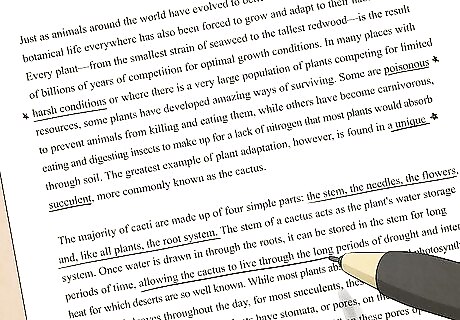
Scan through the article to pick out important information. Flip through the paper briefly and notice the section headings, relevant information, and conclusions. Pick out the sections that you deem to be important so you can focus more on those. You can also read the abstract of the paper as a good example of what the authors find to be important in their article.

Read the article fully 1 to 2 times. Sit down and focus on reading the research paper from cover to cover at least once, if not twice. If there’s any information you don’t understand, read through it again until you can piece out what’s being said. If you don’t understand the paper, you won’t be able to write an accurate summary of it. Depending on how long and dense the paper is, your initial reading could take you up to an hour or more.
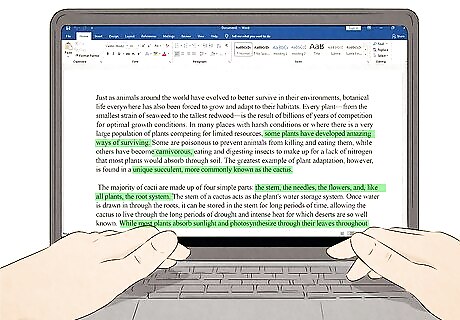
Underline or highlight important information. That way, you can come back to it later as you write your summary so you know what to include. You can decide what’s important based on what you’re using your summary for and what the focus of the paper is. The important information will usually be toward the end of the paper as the authors explain their findings and conclusions.

Take notes summarizing sections in your own words. As you read, jot down some notes explaining the takeaways of each section. Make sure you’re writing in your own words to prepare you for writing an entire summary. Try to write down the important ideas to come back to later. Writing a summary without plagiarizing, or copying the paper, is really important. Writing notes in your own words will help you get into the mindset of relaying information in your own way.
Including Relevant Information
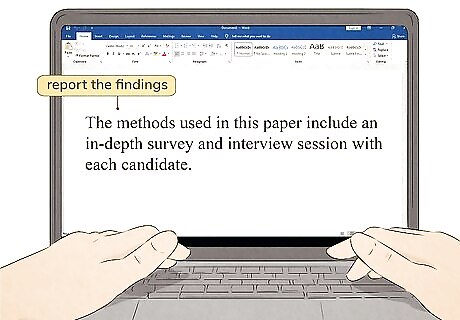
Aim to report the findings, not evaluate them. It can be easy to turn a summary into an analysis of the paper, especially if you’re used to writing your own research papers. However, for summary writing, you should try to simply report on the findings, not add in your own evaluation or critique of the paper or methods. For example, “The methods used in this paper are not up to standards and require more testing to be conclusive.” is an analysis. ”The methods used in this paper include an in-depth survey and interview session with each candidate.” is a summary.

Keep your summary brief. Depending on what you are summarizing, the length of your final summary can vary. However, most summaries are 1 to 2 paragraphs long. Any longer than that and you run the risk of an ineffective summary that’s too long to read quickly. If you’re writing a summary for class, your professor may specify how long your summary should be. Some summaries can even be as short as one sentence.
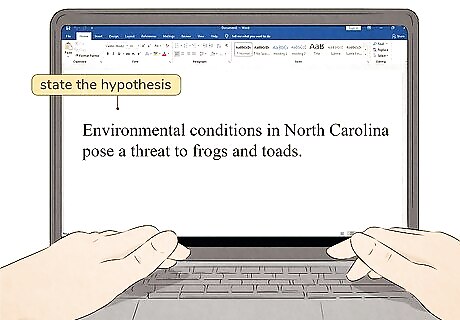
State the research question and hypothesis. To begin your summary, start by summarizing what the authors aim to answer and what their hypothesis was. You can combine both the question and the hypothesis into one short sentence to open up your summary. For example: ”Environmental conditions in North Carolina pose a threat to frogs and toads.”
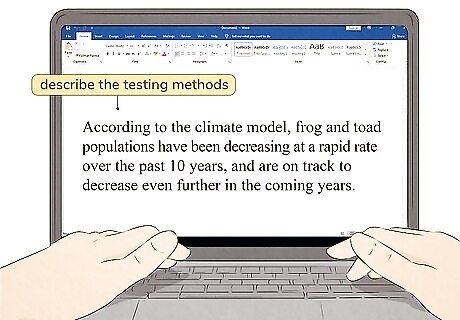
Describe the testing and analyzation methods. Take this part of the summary from the Methods section in the research paper. You don’t have to go into too much detail, but you should spend 1 to 2 sentences describing how the scientists got the data and analyzed it. For example: “According to the climate model, frog and toad populations have been decreasing at a rapid rate over the past 10 years, and are on track to decrease even further in the coming years.”
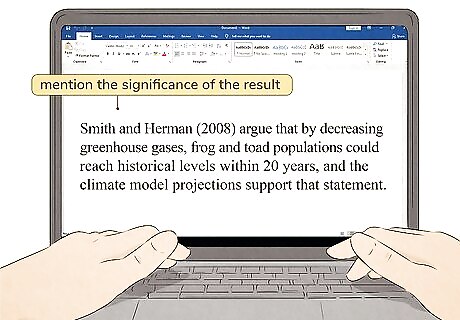
Talk about the results and how significant they were. To wrap up your summary, briefly explain what the authors of the paper found and how conclusive the results were. If the results were inconclusive, try to make that clear. For example: “Smith and Herman (2008) argue that by decreasing greenhouse gases, frog and toad populations could reach historical levels within 20 years, and the climate model projections support that statement.” You can add in the authors and year of publication at any time during your summary.

Edit your summary for accuracy and flow. Go back through your summary and check it for spelling errors or misinformation. Try to gauge how clear your writing is, and ask yourself how well you’d understand it if you hadn’t read the original paper. If you have time, try reading your summary to someone who hasn’t read the original paper and see if they understand the key points of the article.



















Comments
0 comment